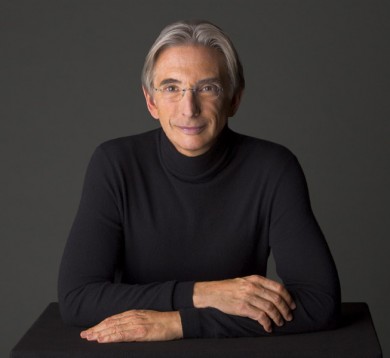MTT, Shaham bring precision and panache to Russian Romanticism

MIchael Tilson Thomas led the New World Symphony in music of Prokofiev and Rachmaninoff Friday night at New World Center. Photo: Chris Wahlberg
Russian music from the early 20th century comprised the bill of fare for the New World Symphony’s concert Friday night at the New World Center. Major scores by Prokofiev and Rachmaninoff seemed made to order for the formidable talents of artistic director Michael Tilson Thomas and violin soloist Gil Shaham.
The Violin Concerto No. 2 in G minor was Prokofiev’s final European commission before his return to the Soviet Union in 1936. Lyrical and bittersweet but tinged with rhythmic propulsion and spiky orchestral interjections, the score is both an excellent showpiece and a brilliant gloss on the classic 19th-century romantic violin concerto.

Gil Shaham
Shaham easily met the concerto’s virtuosic demands in a performance that banished literal routine in favor of interpretive risk. With a tone full and darkly beautiful, Shaham played the concerto’s haunting opening melody at an unusually deliberate tempo. In the more animated material that followed, he took off at flying speed, the contrasts sharp and strongly pointed. The second movement Andante is the concerto’s heart, a graceful violin melody soaring over light winds and plucked orchestral strings. Shaham’s light touch and flowing pulse captured the magic of one of Prokofiev’s most inspired creations and he brought plenty of sinew and fire to the more aggressive central episode.
Prokofiev’s sense of ironic sarcasm propels the perpetual motion finale and Shaham allowed his sound to turn appropriately harsh, sailing through the darting off-kilter rhythms and pyrotechnical flights in the violin’s highest register with panache.
Tilson Thomas’s rhythmically alert, wonderfully detailed accompaniment captured Prokofiev’s orchestral wizardry. He highlighted the prominent wind and horn writing and brought real bounce to the dancelike interjections of the trumpets in the second movement. The dark undercurrent of the lower strings was a constant presence, vividly pointing up the score’s enigmatic subtext.
Rachmaninoff’s sprawling Symphony No. 2 (1907) is one of the last major scores inspired by the romantic tradition of Tchaikovsky. Once commonly played in truncated form, recent decades have seen this symphony performed in its entirety as the composer originally conceived the piece.
Tilson Thomas approached the work on its own terms, the performance lasting over fifty minutes. From the opening rumblings of the cellos and basses, Tilson Thomas led a taut, invigorating performance that lacked nothing in romantic ardor but never succumbed to the overblown excesses some conductors impose on the score. The precision of the string playing was particularly impressive, alternately lean and lustrous in the symphony’s shifting color palette. A lightning-fast coda capped a first movement of inexorable energy. The scherzo was highly charged, the suggestions of the Dies irae motive emphatically underlined.
Rachmaninoff’s lyrical sentiment takes center stage in the Adagio. Tilson Thomas maintained tight control over the long, sustained musical line, never allowing passion to descend into bathos. Instrumental lines were given strong presence, the violin and clarinet solos clearly articulated amidst the rich orchestral texture.
The tumultuous fervor of the Allegro vivace finale was assayed with fire and whiplash intensity, the final major key resolution the triumphant culmination of a volatile journey. Tilson Thomas’s meticulous attention to dynamics spanned the full range from the softest pianissimo to full throated orchestral blasts of brass and percussion. Rachmaninoff’s symphonic canvass proved an inspired showcase for the New World players in top form.
The New World Symphony repeats the program with the addition of Tchaikovsky’s Marche solennelle 8 p.m. Saturday at the Arsht Center in Miami. 305-673-3331 www.nws.edu.
Posted in Performances
Leave a Comment
Sat Feb 18, 2012
at 10:35 am
No Comments






